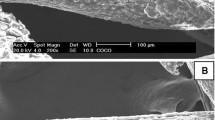Abstract
The concentrations of iodine in fresh waters are known to be within the range of 0.5 to 35 ng·ml−1, much lower than in oceanic waters. The iodine concentrations, particularly that of129I which is significant from the radiation safety aspect, in public drinking waters have to be specified in order to verify the required level before distribution for domestic use. A modified version of an established method was used in the adsorption of iodine, iodate, total inorganic iodine and charcoal-adsorbable iodine using activated carbon prepared from oil palm kernel wastes. A thorough investigation of the physical properties of the activated carbon was carried out to determine its viability as an adsorbent for volatile species such as iodine. The iodine species were preconcentrated from water samples collected from wells in villages and from water intake points along rivers. The quantitative analysis of the species adsorbed was done by irradiating the activated charcoal loaded with the respective species in a neutron flux of 5.1·1012 n·cm−2·s−1 from a TRIGA MkII, nuclear reactor. Recovery experiments using spiked samples was done to provide quality assurance controls.
Similar content being viewed by others
References
J. E. Lovelock, R. J. Maggs, R. J. Wade, Nature, 241 (1973) 194.
V. W. Truesdale, Mar. Chem., 6 (1978) 1.
V. W. Truesdale, C. P. Spencer, Mar. Chem., 2 (1974) 33.
Y. Muramatsu, S. Uchida, M. Sumiya, Y. Ohmomo, J. Radioanal. Nucl. Chem., 94 (1985) 329.
R. Seki, E. Kimura, T. Takahashi, N. Ikeda, J. Radioanal. Nucl. Chem., 138 (1990) 17.
H. Katagari, O. Narita, A. Yamato, M. Kinoshita, J. Radional. Nucl. Chem., 138 (1990) 187.
W. Susetyo, F. Lahagu, Sigit, H.S. Das, J. Radioanal Nucl. Chem., 164 (1992) 373.
J. R. W. Woittiez, H. A. van der Sloot, G. D. Wals, B. J. T. Nieuwendijk, J. Zonderhuis, Mar. Chem., 34 (1991) 247.
A. Hussain, S. Y. Ui, Proc. Malaysian Sci. Tech. Congress, Vol. 1, 1993, p. 188.
S. Mukherjee, S. Bhatlachay, J. Phys. Chem., 2 (1974) 1725.
S. E. Manahan, Fundamentals of Environmental Chemistry, Lewis Publishers, Michigan, 1993, p. 394.
D. Hoede, J. Wijkstra, van der Sloot, Netherlands Energy Research Foundation Rep. ECN-203, 1987, p. 231.
Author information
Authors and Affiliations
Rights and permissions
About this article
Cite this article
Yusof, A.M., Gill, S.K. & Wood, A.K.H. The use of charcoal from agriculture waste in the speciation of iodine from well and river waters. J Radioanal Nucl Chem 235, 279–283 (1998). https://doi.org/10.1007/BF02385975
Received:
Issue Date:
DOI: https://doi.org/10.1007/BF02385975




